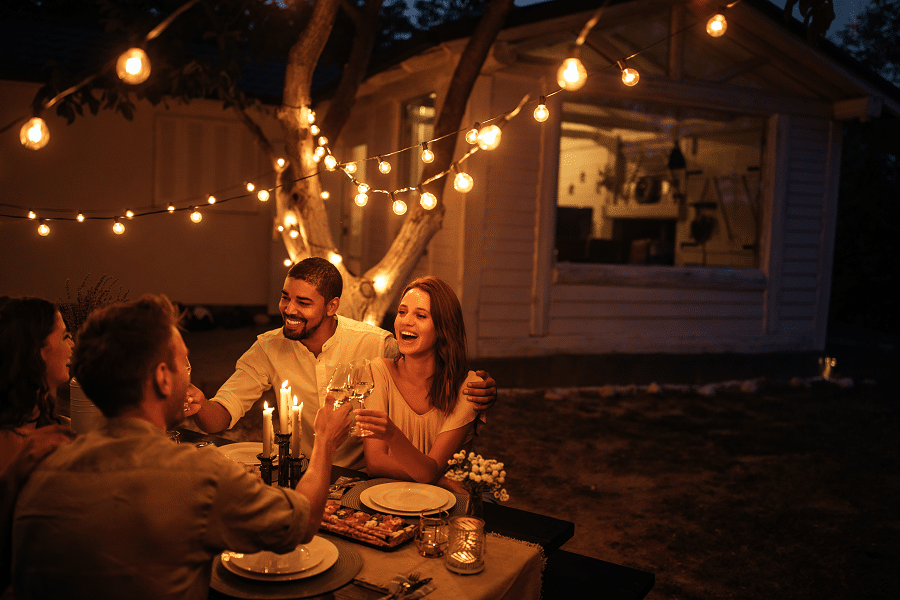Designing your patio is not just about creating an outdoor space; it’s about crafting a personal haven that extends the comfort and style of your home into the natural world. This space, whether used for morning coffees, evening barbecues, or simply to unwind, should reflect your personality and cater to your lifestyle needs. In this comprehensive guide, you’ll discover a range of ideas to inspire your patio design journey. From understanding your space to selecting the right materials and furniture, each aspect is crucial in transforming your patio into a charming and functional outdoor retreat.
Contents
- 1 Understanding Your Space and Needs
- 2 Choosing a Style That Reflects You
- 3 Selecting the Right Materials
- 4 Furniture Selection and Arrangement
- 5 Innovative Lighting Solutions
- 6 Incorporating Landscaping and Greenery
- 7 Budgeting and Cost-Effective Strategies
- 8 Accessorizing and Personal Touches
- 9 Start Your Patio Transformation Today!
Understanding Your Space and Needs
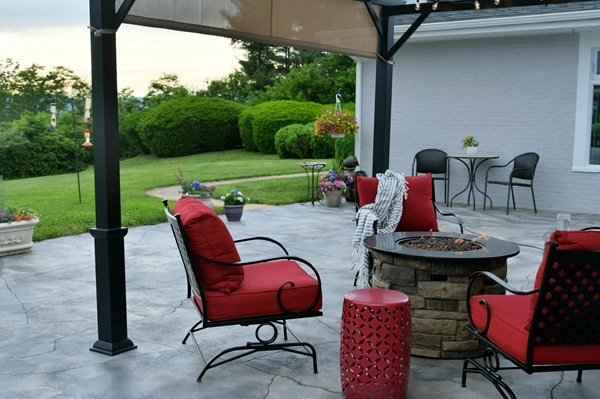
The first step in patio design is assessing the physical layout of your space. Consider the size, shape, and orientation of your patio area. Is it long and narrow, or wide and open? Does it receive ample sunlight, or is it mostly shaded? These factors will influence your design choices, from materials to plant selections. Next, think about how you want to use your patio. Whether it’s for hosting large gatherings, enjoying quiet family dinners, or creating a peaceful reading nook, your intended use will dictate the design’s direction, ensuring that the final layout serves your lifestyle perfectly.
Moving beyond the physical aspects, it’s essential to consider the intangible elements. The ambiance you wish to create plays a significant role. Do you prefer a vibrant, social atmosphere or a serene, private oasis? This decision will impact everything from the choice of colors and textures to the style of furniture. Additionally, consider the flow between your indoor and outdoor spaces. A seamless transition can make your patio feel like a natural extension of your home, enhancing both areas’ usability and aesthetic appeal.
Choosing a Style That Reflects You
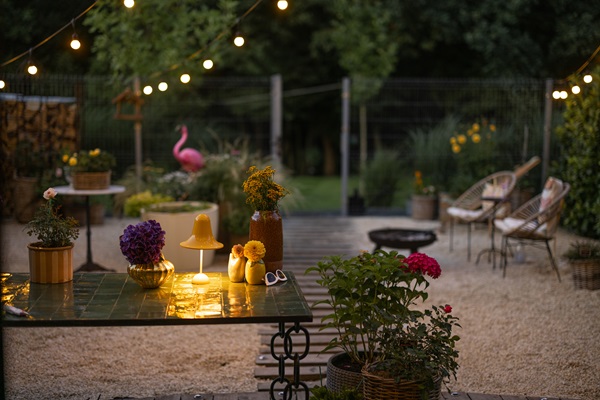
Selecting a style for your patio is a journey into self-expression. Do you lean towards a modern, minimalist look with clean lines and a monochromatic palette, or does a rustic, naturalistic style with earthy tones and organic materials speak to you? Each style creates a different mood and reflects a unique aspect of your personality. It’s also important to consider how your patio’s style will complement your home’s existing architecture. A cohesive design ensures that your outdoor space feels like a harmonious extension of your home rather than an afterthought.
Exploring different styles can be exciting. Mediterranean styles evoke a sense of warmth and luxury with their rich colors and intricate patterns, while Scandinavian designs offer simplicity and functionality with a focus on natural light and open spaces. Don’t be afraid to mix elements from different styles to create a patio that is uniquely yours. Remember, the key is to choose a style that not only looks good but also feels right and resonates with your personal taste.
Selecting the Right Materials
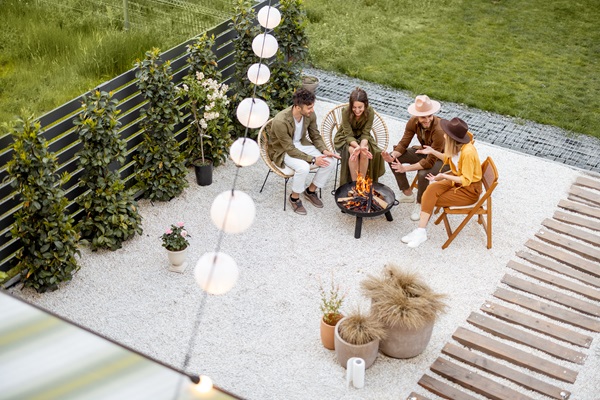
The materials you choose for your patio not only define its look but also its longevity and maintenance needs. Popular options include wood, which offers a classic, warm aesthetic but requires regular maintenance, and concrete, known for its durability and versatility in design. Pavers and stone are other excellent choices, each bringing a unique texture and character to your patio while also offering different levels of durability and maintenance requirements.
When selecting materials, it’s crucial to consider the climate you live in. Materials like wood may not fare well in very humid or rainy climates without proper treatment and care, while pavers can provide better drainage in such conditions. Additionally, think about the maintenance you’re willing to commit to. Some materials may require regular sealing or staining, while others, like certain types of composite decking, offer a more low-maintenance solution. Your choice should strike a balance between aesthetic appeal and practicality.
Furniture Selection and Arrangement
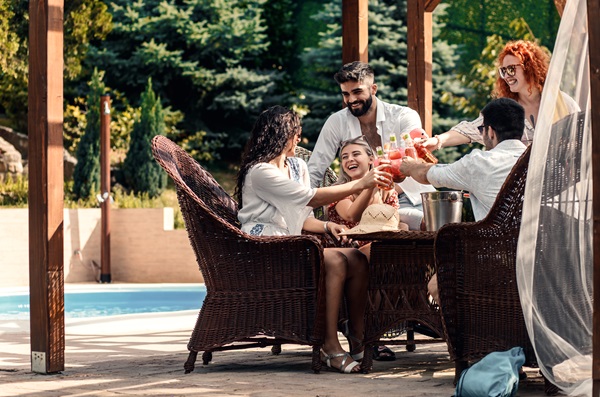
Choosing the right furniture is pivotal in bringing your patio design to life. Start by considering the material and style of the furniture, ensuring it complements your patio’s overall design and withstands outdoor conditions. Comfort is key – after all, this is a space for relaxation. Look for pieces that invite you to sit down and stay awhile, like plush sofas or cozy lounge chairs.
Arranging your furniture effectively can maximize both space and functionality. For smaller patios, consider multi-functional furniture like storage benches or tables that can double as seating. In larger spaces, create distinct zones – a dining area, a lounging area, and perhaps a spot for sunbathing or reading. The arrangement should encourage flow and conversation, making your patio an inviting space for both relaxation and entertainment. Remember, the layout isn’t set in stone; feel free to experiment and rearrange as your needs and preferences evolve.
Innovative Lighting Solutions

Lighting plays a crucial role in setting the mood and ensuring functionality of your patio after dusk. Consider the ambiance you want to create: soft, warm lighting for a cozy, intimate feel or bright, clear lights for lively gatherings. Different lighting options, such as solar-powered lights, offer an eco-friendly solution, while LED lights provide long-lasting, energy-efficient illumination. String lights can add a whimsical touch, perfect for entertaining, whereas lanterns can create a more traditional and serene atmosphere. When planning your lighting, also think about safety; well-lit paths and steps are essential for preventing accidents.
The placement of lights is as important as the type of lighting chosen. Strategically position lights to highlight key features of your patio, like a beautiful garden or a unique architectural element. Consider layering your lighting with a combination of overhead lights, wall lights, and ground lights to create depth and interest. Dimmer switches and smart lighting systems can offer flexibility, allowing you to adjust the lighting to suit different moods and occasions. Remember, outdoor lighting should enhance the beauty of your patio while being functional and safe.
Incorporating Landscaping and Greenery
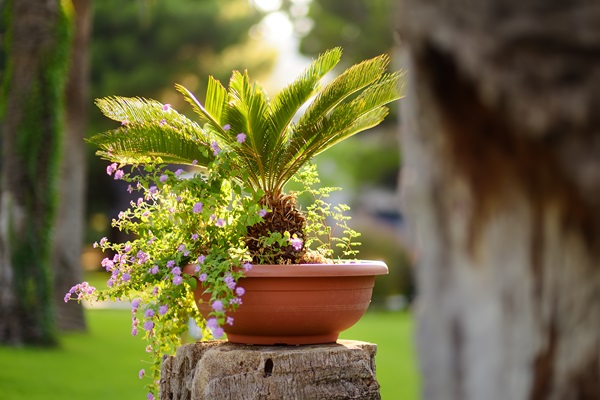
Landscaping is a vital element in patio design, adding color, texture, and privacy. Start by considering plants that complement your patio’s style and climate. For a tropical feel, lush, leafy plants are ideal, while succulents and hardy grasses suit a more arid, minimalist aesthetic. Think about the maintenance level you’re comfortable with; some plants require more care than others. Use planters and raised beds to add greenery without committing to major landscaping changes.
Beyond aesthetics, plants can serve functional purposes in your patio design. Tall shrubs or trellises with climbing vines can create natural privacy screens, while small trees or large plants can offer shade in sunny areas. Consider incorporating a herb garden or a small vegetable patch for a practical and rewarding addition. When arranging your plants, balance is key – too few may look sparse, while too many can feel cluttered. Aim for a harmonious blend that enhances your patio’s overall look and feel.
Budgeting and Cost-Effective Strategies

Designing a patio doesn’t have to break the bank. Start by setting a realistic budget, considering all aspects of your project, from materials to labor. Research different materials and furniture options to find a balance between quality and cost. Sometimes, investing a bit more in durable materials can save money in the long run due to lower maintenance and replacement costs. Don’t overlook the potential of upcycling or refurbishing existing pieces, which can add character and uniqueness to your patio while keeping costs down.
There are also creative ways to cut costs without compromising on style. For instance, DIY projects can be both rewarding and cost-effective. Simple tasks like painting, planting, or assembling furniture can be done without professional help. Look for sales and discounts, especially at the end of the season, to purchase high-quality items at a lower price. Remember, a beautiful patio is about thoughtful design and personal touches, not just the amount spent.
Accessorizing and Personal Touches
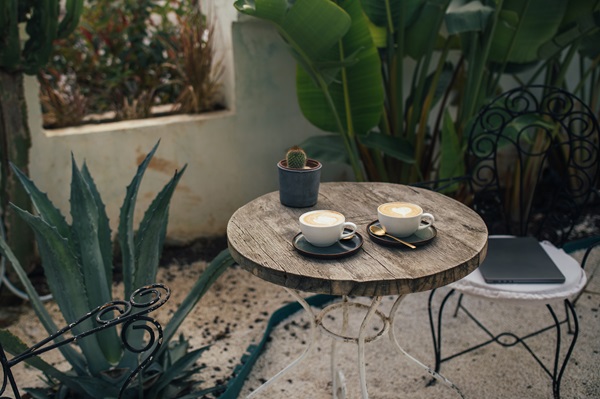
Accessorizing your patio is the final step in personalizing your outdoor space. Choose accessories that not only complement the overall design but also add a touch of your personality. Consider items like outdoor rugs, decorative cushions, and wall art that can withstand outdoor conditions. These elements can tie the entire space together and make it feel cozy and inviting. When selecting accessories, also think about their functionality – weather-resistant fabrics for cushions, easy-to-clean rugs, and durable decor are essential for longevity.
In addition to decorative items, consider practical accessories that enhance the usability of your patio. Fire pits can provide warmth and a focal point for social gatherings, while umbrellas or awnings offer shade on sunny days. Water features like fountains can add a soothing element to the environment, and outdoor speakers can set the mood for entertainment. Remember, the goal is to create a space that reflects your style and meets your needs, making your patio a cherished extension of your home.
Start Your Patio Transformation Today!
Embarking on your patio design journey can be a fulfilling and creative endeavor. This guide has laid out the essential steps, from understanding your space to adding those final personal touches. Remember, designing your patio is about creating a space that resonates with your lifestyle and aesthetic preferences. So, take these ideas, blend them with your creativity, and start transforming your outdoor area into a beautiful, functional extension of your home. Your dream patio awaits – it’s time to bring it to life!
